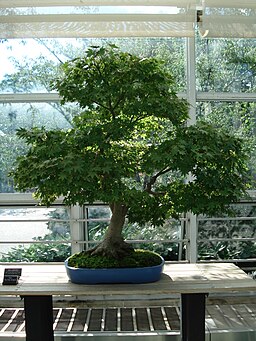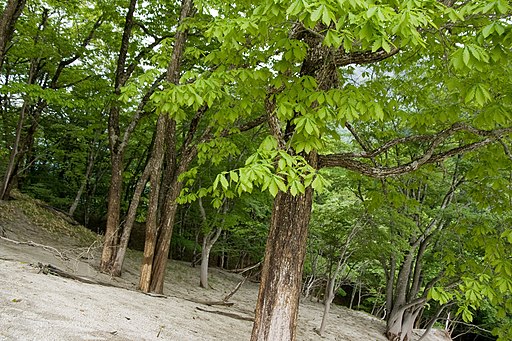When you start to research autumn, you have to look at trees, foliage, fauna, and the culture of the region for that season.
so, I will break it down into the following:
1) Trees
First things first, trees grace every corner of our planet, yet their presence varies with distinctive blends in each locale. In my urban abode, palm trees, elms, mulberries, and pines paint the landscape in a harmonious fusion. However, to envisage the countryside’s allure, one must acquaint oneself with the prevalent arboreal tapestry of the region. As I turn my gaze towards the mountains of Japan, a realm of enchantment unveils itself through the prism of autumn. Here, a symphony of colors adorns the landscape, with the most common trees in this highland expanse including the vibrant maples, sturdy oaks, regal ginkgos, and the resilient Japanese larches. These trees, like silent poets, script the tale of seasonal change across the Japanese mountains, offering a picturesque spectacle that beckons exploration. Lets Break this down further, by introducing each tree on it’s own.
Jeffrey O. Gustafson, CC BY-SA 3.0, via Wikimedia Commons
Maples
In the enchanting mountains of Japan, a vibrant tapestry of maples paints the landscape in hues of autumnal splendor. Among these, the Japanese Maple (Acer palmatum) stands as a jewel, displaying a breathtaking array of colors, ranging from fiery reds and oranges to delicate yellows. Its delicate, palmate leaves create an intricate silhouette against the sky, making it a beloved ornamental tree worldwide. Another notable variety is the Trident Maple (Acer buergerianum), recognized for its distinctive three-lobed leaves that morph into rich reds and golds in the fall. For a truly captivating sight, the Full Moon Maple (Acer japonicum) graces the scene with its large, rounded leaves that transform into deep reds and oranges. These maples thrive in Japan’s mountainous terrain, each species offering a unique visual symphony as autumn unfurls its brilliance. To witness the enchantment of these maples, you can explore images and details on reputable websites like the Doyouknowjapan.com https://doyouknowjapan.com/maple/.
Σ64, CC BY 3.0, via Wikimedia Commons
Oaks
In the mountainous realms of Japan, a diverse array of oak trees adds a rich tapestry to the autumn landscape. One prominent species is the Japanese Oak (Quercus crispula), renowned for its striking foliage. Its leaves morph into shades of deep red, burnt orange, and vibrant yellow as autumn unfurls, creating a breathtaking spectacle against the backdrop of the mountains. Another notable inhabitant is the Konara Oak (Quercus serrata), celebrated for its robust form and robust leaves that turn a rich russet hue during fall. Both of these oak species contribute to the vibrant symphony of autumn colors in Japan’s mountainous terrain. For those seeking imagery of these captivating trees, websites like “Japan Nature Guides” (https://www.japannatureguides.com/) and “Japan Travel” (https://en.japantravel.com/) offer compelling photographs and information about the diverse flora in Japan’s mountain regions.

EecherplazGinkgo06.jpg: Cayambederivative work: Ginkgotree, CC BY-SA 3.0, via Wikimedia Commons
Ginkgo
In the picturesque mountains of Japan, several types of ginkgo trees, also known as Ginkgo biloba, flourish in their distinct splendor. Among these, the “Autumn Gold” cultivar stands out with its brilliant golden-yellow foliage that creates a breathtaking contrast against the azure sky. Another notable variety is the “Autumn Rose,” characterized by its delicate pink-hued leaves that imbue the landscape with a subtle, ethereal charm. Ginkgo trees, with their fan-shaped leaves, hold the distinction of being one of the oldest tree species on Earth, dating back millions of years. They are renowned for their remarkable resilience, often surviving in urban environments. Their leaves, which turn stunning shades of yellow and gold in the fall, create a mesmerizing carpet beneath their boughs. To witness the captivating beauty of these ginkgo tree varieties and their autumn transformations, you can explore images on reputable websites such as the Arbor Day Foundation (arborday.org) or the Royal Horticultural Society (rhs.org.uk).
Image courtsey of Walter Siegmund (talk · contribs), CC BY-SA 3.0, via Wikimedia Commons
Japanese Larch
The Japanese larch tree, scientifically known as Larix kaempferi, is an elegant deciduous conifer that captivates with its unique attributes. Standing as a testament to resilience, it boasts a conical shape with ascending branches that form a graceful crown. During spring and summer, its needles emerge in soft, vibrant shades of green, creating a soothing contrast against the sky. As autumn arrives, this tree transforms into a living masterpiece, adorning itself with a breathtaking array of golden-yellow needles that seemingly catch fire in the sunlight. The Japanese larch’s needles are arranged in clusters along the branches and gracefully shed during winter, revealing its intricate architecture. Native to Japan, this tree has been embraced for its aesthetic appeal and is often planted in gardens and parks, serving as a living testament to the dynamic beauty of seasonal transitions.
links for the Japanese Larch:
from Wild Flower Web http://www.wildflowerweb.co.uk/plant/1481/japanese-larch (includes youtube video at bottom)
Video Links for Autumn in japan:
- Japan’s Three Greatest Autumn Leaves Sites by HealingJapanTV https://www.youtube.com/watch?v=72EkaiTzuNs
- 20 best autumn leaves spots in Japan by Tara Channel https://www.youtube.com/watch?v=YoSI9T6IccE



